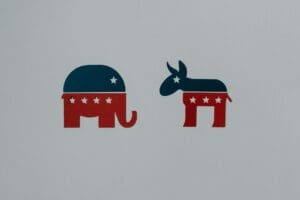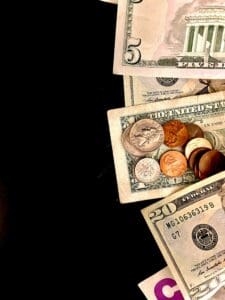An idea pioneered by Alaska could inoculate society against extreme inequality
When voters went to the polls in November, one outcome was certain: America would emerge as a nation deeply divided. President-elect Biden’s pledge to “unite and heal” will do little to remedy this reality unless good intentions are matched by bold policies that truly bring Americans together. Universal property—an innovative idea that goes beyond income to the economic bedrock of wealth—offers a way to move in that direction, one that could win support on both sides of the political aisle.
Americans cherish both equality and liberty.
The problem is that when these appear to be in conflict, the nation is torn between those willing to sacrifice some liberty for greater equality and those willing to do the opposite.
This underlying fault line was in evidence between those who voted for Biden and those who voted for Trump. It is also a source of ambivalence among the many Americans on both sides who value both.
The notion that equality is the enemy of liberty, and vice versa, is founded on the view that government is the ultimate guarantor of equality, and private property the ultimate guarantor of liberty.
The balance between equality and liberty thus morphs into the balance between the state and the market.
A quintessential exposition of this line of thinking can be found in the writings of antebellum South Carolina Senator John C. Calhoun. In his Disquisition on Government, published in 1851, Calhoun juxtaposed “two great classes”: one comprised of taxpayers (including slaveholders like himself) who fund the government, the other of “tax-consumers” who live on government handouts. The 20th-century free-market avatar Ayn Rand gave Calhoun’s classes more vivid labels: “The creator produces,” she wrote in her 1943 novel The Fountainhead, “the parasite loots.”
Around the same time that Calhoun was penning his Disquisition, across the Atlantic two German émigrés offered a very different notion of class struggle. In the Communist Manifesto, Karl Marx and Friedrich Engels portrayed the working class as the true creators of wealth, and the owners of capital as parasites. A key plank in their program for building a more egalitarian society was state ownership of “the means of production.” The shortcomings of this recipe became all too clear with the advent of Communist regimes in the 20th century. The belief that state property would in a meaningful sense belong to all was belied by the rise of new elites, whose power like that of capitalists rested on control of property—property nominally belonging to the governments they ran. In Russia, three decades after elite “reformers” in the U.S.S.R. leveraged their political status to reinvent themselves as post-communist oligarchs, wealth is distributed even more unequally than in the United States. And in China inequality has reemerged with a vengeance.
The lesson: Neither private property nor state-owned property is sufficient to guarantee equality and liberty for all.
The first can allow economic elites to monopolize wealth and power, the second can allow political elites to do the same. But there is an alternative type of property that can never be concentrated in the hands of an elite. It was pioneered in, of all places, Alaska.
In 1976, as oil production commenced on Alaska’s North Slope, the state amended its constitution to create a new entity called the Alaska Permanent Fund.
The idea was the brainchild of Republican governor Jay Hammond, who believed that Alaska’s oil wealth belonged to all its residents, and that all should receive equal annual dividends from its extraction. The fund is “permanent” because some of the money is invested so that future generations will receive dividends too once oil production ends. “That money and the resources it comes from belong to all Alaskans,” Hammond wrote, “not to government or to a few ‘J.R. Ewings’ who in states like Texas own almost all the oil.” Not surprisingly, the fund has proven enormously popular across the state’s political spectrum. The record payout, more than $3,000 per person including a one-time rebate, came under Governor Sarah Palin in 2008.
The Permanent Fund is neither private property nor public property in the conventional senses. Unlike public property, the right to the revenue belongs to the people, not the government. Unlike private property, this right cannot be bought or sold, owned by corporations, or concentrated in a few hands. It is universal property: individual, inalienable and perfectly egalitarian.
In 2001 Peter Barnes, a solar energy entrepreneur and co-founder of the Working Assets Long Distance telephone company, wrote a book called Who Owns the Sky?, in which he proposed to treat the atmosphere’s limited capacity to safely absorb carbon emissions like Alaska treats its oil: as a joint inheritance that belongs in equal measure to each and every person. To protect this precious inheritance for future generations, Barnes argued that we ought to strictly limit the use of fossil fuels, charge prices for the carbon emissions we do permit, and recycle the revenue to the public as dividends. Hammond, for one, found the idea intriguing. “Pie in the sky?” he mused. “Perhaps, but provocative.”
In his forthcoming book Ours: How Universal Property Can Transform the World, Barnes extends the possibilities for this alternative type of property beyond natural assets to include assets we have created as a society, such as the legal and institutional architecture of the financial system that underpins individual prosperity.
The gifts of society and the gifts of nature would be treated as a joint inheritance belonging to all: universal property. Those who benefit from using them would pay according to their use, and the money received from their use would be paid out equally to all.
If implemented on a significant scale, universal property would inoculate the society against extreme inequality. It would provide an asset-based source for a universal basic income, not dependent on redistributive taxation. Charging for use of the sky’s carbon-absorption capacity would help stabilize the Earth’s climate by curbing emissions; similarly, financial transaction taxes would help stabilize the economy by curbing hair-trigger speculation.
Universal property is a bold idea that does not fit neatly into old labels. It is neither Democratic nor Republican, neither liberal nor conservative, neither socialist nor libertarian. Or rather, it is both. It would advance equality and liberty together. And by bringing everyone into the same boat as co-owners, it could help bridge the divides that keep us apart.
__________________________________________________________________
About the Author:
James K. Boyce is a senior fellow at the Political Economy Research Institute at the University of Massachusetts Amherst. His most recent books are Economics for People and the Planet and The Case for Carbon Dividends.
__________________________________________________________________
Original article appeared in Scientific American: https://www.scientificamerican.com/article/the-case-for-universal-property/



















